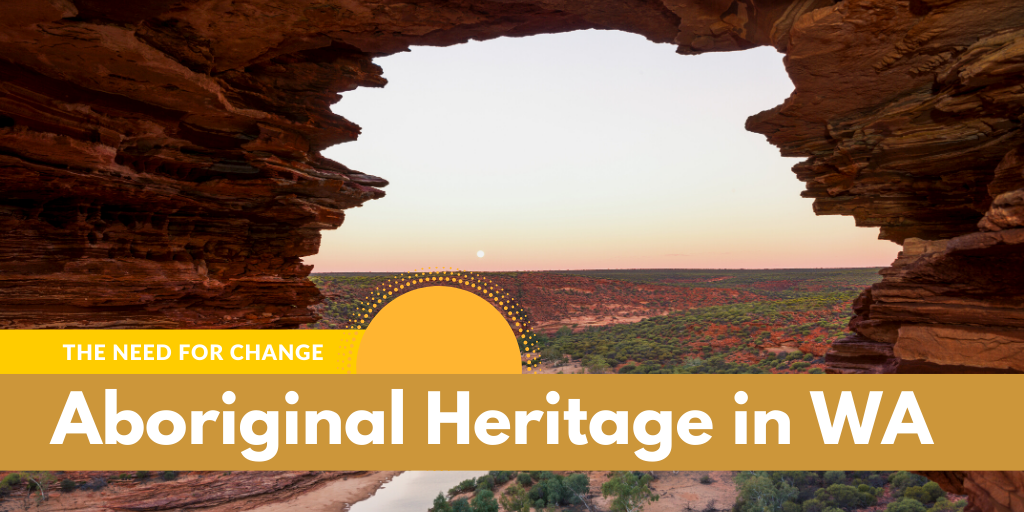Heritage in Western Australia is protected and regulated under two separate Acts – the WA Heritage Act 2018 and the Aboriginal Heritage Act 1972. The current Aboriginal Heritage Act makes provisions on behalf of the community for the preservation of places and objects customarily used by or traditional to the original inhabitants of Australia or their descendants (or associated therewith, and for other purposes incidental thereto).
This insight focuses on the review of the Aboriginal Heritage Act 1972 (the Act) and the planned replacement Act. We also touch on the limitations of the current Act, what the desired outcomes of the review are and what the proposed changes mean for industry.
It is important to note that the Act is currently still in the review process, with the final round of public review scheduled for late 2020. Therefore, matters discussed in this insight may only be applicable up until this process is complete.
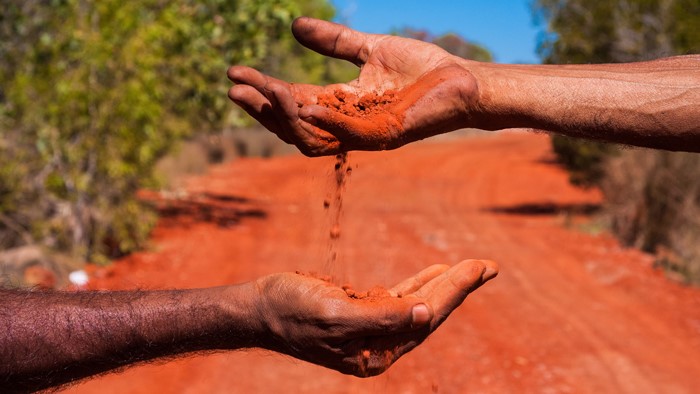
Limitations of the Current Act
The Aboriginal Heritage Act was once viewed as pioneering. However, as a result of population growth and industrial expansion, it is now criticised as being ineffective in the face of Western Austalia’s heavy reliance on an extractive economy (Vaughan, 2016). In fact, there have been many highly publicised instances of development impacting heritage values such as:
- The exclusion of a portion of mineral-rich land at Marandoo in the Karijini National Park from protection through the passing the Aboriginal Heritage (Marandoo) Act 1992;
- Damage to Aboriginal archaeological sites at the Ungani oilfields operations in the Kimberley in 2003;
- The lifting of the protected area status of the Woodstock Abydos art complex in 2004 for the building of a railway line; and
- The removal of 900 rock engravings on the Burrup Peninsula to make way for a LNG project in 2006.
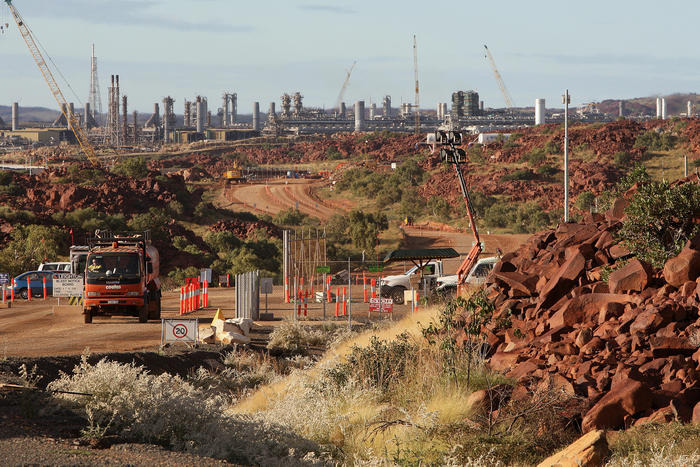
Criticism of the Act is largely centralised on section 18, whereby a developer may make an application to impact a site (Vaughan, 2016; Barnsbry, 2013). Between 2008 and 2013, 646 section 18 applications were lodged with the WA Department of Aboriginal Affairs (now the Department of Land Planning and Heritage), of which only one was refused (Vaughan, 2016), despite the recommendations made by the Aboriginal Cultural Materials Committee (Barnsbry, 2013).
The feedback obtained from the Phase 1 Consultation Process concluded in June 2018, highlighting the many issues of the current Act. Some of the issues raised during the consultation, as reported by the Department of Planning, Lands and Heritage (2019), include:
- There is no statutory requirement to involve Aboriginal people in decisions on Aboriginal heritage
- The Act does not adequately protect cultural landscapes and intangible heritage
- The current system is adversarial and requires the Minister to adjudicate (make a formal judgement on) all land-use decisions where Aboriginal heritage may be impacted
- The current system does not adequately facilitate risk-based decision-making and requires all proposals to follow the same approval pathway irrespective of the degree of actual or predicted heritage impact
- The Register of Aboriginal Places and Objects is not a reliable source of information about the location of Aboriginal heritage as some people refuse to have their most important places included in the register
- The lack of understanding of Aboriginal heritage by the broader community leads to a lack of value, which can contribute to its destruction
- The Act does not provide for any right of appeal by Aboriginal people in relation to decisions about their cultural heritage
Desired Outcomes
Indigenous heritage conservation and management aims to sustain the relationship between Indigenous people and their heritage places in a way that ensures the heritage values of each place is maintained for present and future generations (Australian Heritage Commission, 2002).
The Aboriginal Heritage Act discussion paper very clearly portrays the Governments desired outcome for the new legislation. That is, as stated by the Minister for Aboriginal Affairs, a commitment to ensuring we have a modern legislation that effectively recognises, protects and celebrates the cultural heritage of Aboriginal Western Australians and operates transparently and efficiently (Wyatt MLA, 2019).
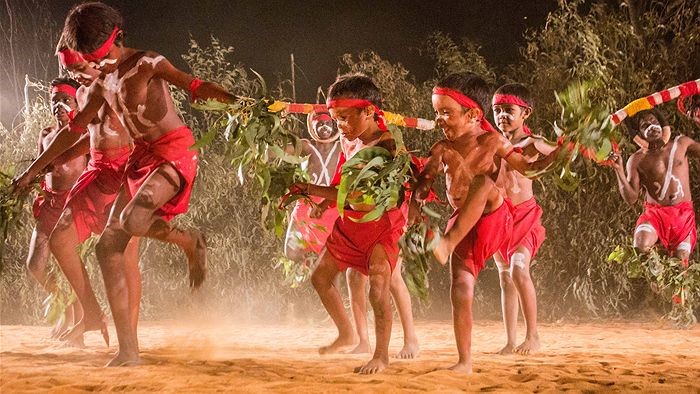
The discussion paper included a number of proposals aimed to deliver more effective protection, conservation and management of Aboriginal cultural heritage in Western Australia. Without getting into the nitty-gritty of each proposal, the key desired outcomes of each has been summarised below. To view the proposals in more detail, please visit www.dplh.wa.gov.au.
| Proposal | Desired Outcome* |
|---|---|
| 1. Repeal the Aboriginal Heritage Act 1972 and deliver new Aboriginal Heritage Legislation | The legislation to protect Aboriginal cultural heritage reflects developments in best practice in heritage management and the rights of Aboriginal people under national and international law. |
| 2. Update definitions and scope of new Aboriginal heritage legislation | The legislation to protect Aboriginal cultural heritage is sensitive to the culture it is designed to protect and therefore, more effective and trusted by Aboriginal people. |
| 3A. Establish a Local Aboriginal Heritage Services 3B. Establish an Aboriginal Heritage Council 3E. Provide Heritage Professional | Active involvement of traditional owners and knowledge holders in decision making and management of heritage matters in particular areas of the country that they have a connection to and cultural responsibility for. Consultation and agreement-making processes with Aboriginal people are culturally appropriate, transparent and provide more certainty for land users. Equitable agreements between land users and Aboriginal people at a local level are encouraged and best practice recognised. System reliance on the Minister as the sole decision-maker on all land use proposals is reduced. |
| 3C. Change the Minister’s Role 3D. Change the role of the Department of Planning, Lands and Heritage | The Minister, who is accountable for an effective Aboriginal heritage management system, can focus on the effective and efficient running of the system. The system is not clogged with matters on which the parties agree and where heritage is not impacted. Ministerial intervention is available but reserved for contentious matters and those where the project is of State Significance or is likely to have a significant impact on Aboriginal heritage. All stakeholders are confident in an Aboriginal heritage system that is fair, effective, efficient and respects Aboriginal people, their culture and their heritage. |
| 4. Retain the current form and function of the register of Aboriginal places and objects but rename it the Aboriginal Heritage Register | Improve the accuracy of records and information on Aboriginal heritage. Increase utility of the register as a record of heritage and planning tool. |
| 5. Introduce a referral mechanism to facilitate tiered assessments of proposed land uses | Land use proposals are designed to co-exist with Aboriginal heritage places wherever possible. Approvals for low impact activities can be streamlined. Reduce risk and cost for land use proponents through early referrals and advice. |
| 6. Encourage and recognise agreement making | Aboriginal people have more opportunity to determine better outcomes for their heritage through agreements that focus on avoiding or minimising impacts on heritage. Better heritage outcomes are achieved through agreements that are based on respectful and positive relationships. New and existing agreements concerning heritage outcomes between relevant Aboriginal people and land users can be used to expedite land use assessments and permitting decisions if they meet certain requirements. |
| 7. Reasons for decisions are published and appeals system regulated | All stakeholders in Aboriginal heritage have confidence in the administrative decisions that affect Aboriginal heritage. Rights of review and appeal are equitable. |
| 8. Modernise the enforcement regime | The duty of care to avoid unauthorised damage to Aboriginal heritage is taken seriously. |
| 9. Protected Areas | The mechanism for recognising Aboriginal heritage places of outstanding importance is more flexible and allows for active management. |
Response
Of all the proposals, the consultation process showed an overall greatest support for the repeal of the Act; with 100% of Aboriginal Organisations and Industry respondents supporting the decision (Department of Planning, Lands and Heritage, 2019b). Despite the apparent overall support for updating the definitions and scope of the Act (Proposal 2), there were mixed views with how this is to be done. The Summary of Responses identified two distinct views. The first, broadening the scope to reflect the Aboriginal people’s views of what constitutes their heritage is a move in the right direction and the second, doing so will result in confusion and add a level of difficulty to assessment processes and applications (Department of Planning, Lands and Heritage, 2019b).
While none of the proposals were opposed by a majority, some clearly received less support and showed division between groups. Industry was shown to support the nomination of Local Aboriginal Heritage Services (LAHS) (Proposal 3A). However, they were less supportive of the Establishment of an Aboriginal Heritage Council. The opposing opinion was shown by the responses of Aboriginal Organisations and Heritage Professionals (Department of Planning, Lands and Heritage, 2019b). It is envisaged that the LAHS will be initially established by existing Aboriginal organisations and will have a statutory role to ensure the right people speak for country, coordinate consultation, and facilitate agreements. Despite the benefits of this, many Aboriginal corporations are under increasing pressure to engage with complex heritage compliance frameworks linked to industry production cycles, while being inadequately resourced to do so (Verth, Dortch, Thomson, & Jeffries, 2019). This move would add increased pressure.
It was also recognised that there is a need for a system which accurately catalogues Aboriginal heritage places (Proposal 4) and noted the importance of imposing minimum standards of information to increase its reliability. Despite receiving majority support or neutral feelings from most responders, 40% of Aboriginal organisations opposed the proposal (Department of Planning, Lands and Heritage, 2019b).
The final proposal to show a division between Aboriginal organisations and Industry was the proposal to modernise enforcement regimes. The proposal received complete support from Aboriginal organisations, with 40% of Industry in opposition (Department of Planning, Lands and Heritage, 2019b).
For more information regarding the responses to the ‘Review of the Aboriginal Heritage Act 1972 Consultation Phase 2’, please view the Summary of Responses.
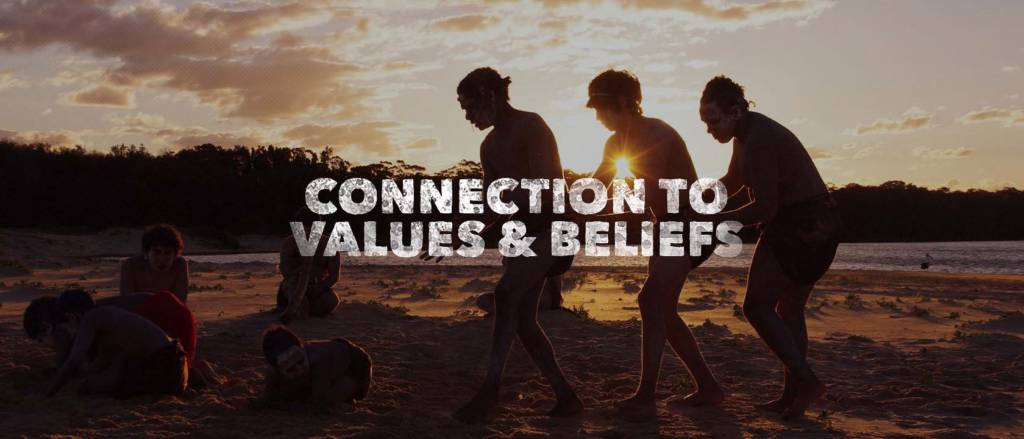
Change to the view of Places
A significant downfall of the current Act is it applies only to places and objects and therefore does not adequately reflect Aboriginal cultural heritage (Department of Planning Lands and Heritage, 2019a). The Indigenous view of the land is much deeper than the physical aspects and instead incorporates a profound spiritual connection. Aboriginal law and spirituality are intertwined with the land, the people and creation forming their culture and sovereignty. It is because of this connection that when land is disrespected, damaged or destroyed, there are real impacts on the wellbeing of Indigenous people (Korff, 2019; Behrendt, 2015).
The new Act proposes to adopt a new definition of ‘place’ to align with the Australia ICOMOS Burra Charter, which defines place as:
“Place means a geographically defined area. It may include elements, objects, spaces and views. Place may have tangible and intangible dimensions.”
(Australia ICOMOS Incorporated, 2013)
While it is supported amongst most who submitted reviews, many do not agree that the definition is broad enough. By including ‘geographically defined’ in the definition, Yamatji Marlpa Aboriginal Corporation believes that the concept of place is limited and needs to take into account Aboriginal traditions and beliefs as places of significance (Yamatji Marlpa Aboriginal Corporation, 2019).
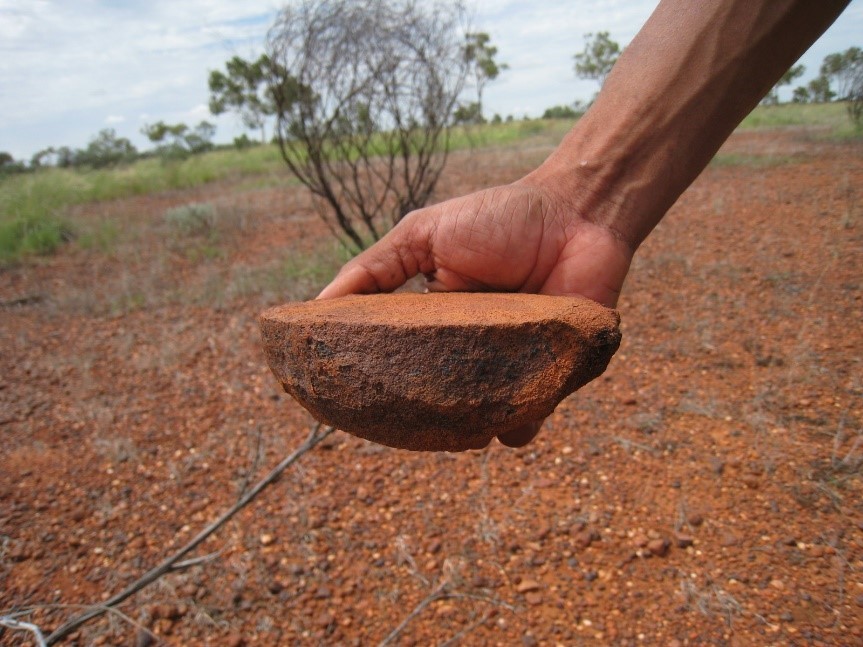
Meaning for Industry
While it is impossible to deduce all of the implications of the new Act in the current stage of the process, some comments can be made regarding some of the new proposals. Herbert Smith Freehills (2019) identified a number of potential impacts. By broadening the scope of the Act from the previous place-centric focus, there may also be a need to change the approach taken in heritage risk assessments as approvals may be required for a greater number of sites and areas. The changes proposed for proposals have several benefits; such as the approval process becoming streamlined with other environmental approvals (reducing duplication), all land users can apply for approvals (rather than just the owners), and the approval will become tied to the land so that subsequent land users do not have to obtain new approvals for the same activity. The transparency alluded to as a result of the proposed changes to the Act has pros and cons While the changes allow for a greater capacity for parties to understand the decision they also allow for parties to challenge and influence decisions. Finally, the increased enforcement regimes result in harsher penalties and may affect work and timelines (Debenham & Wilson, 2019).
Should you need assistance with development heritage management or further understanding your current or future obligations, please email enquiries@integratesustainability.com.au or call Integrate Sustainability on 08 9468 0338.
References
Australia ICOMOS Incorporated. (2013). The Burra Charter: The Australia ICOMOS Charter for Places of Cultural Significance. Australia ICOMOS Incorporated.
Australian Heritage Commission. (2002). Ask First: A Guide to Respecting Indigenous Heritage Places and Values. Canberra: National Capital Printing.
Barnsbry, M. (2013). The Effectiveness of the Aboriginal Heritage Act 1972. Perth, WA: Murdoch University.
Behrendt, L. (2015). Connection to Country. Retrieved from Common Ground: https://www.commonground.org.au/learn/connection-to-country
Debenham, M., & Wilson, E. (2019, May 21). A NEW ABORIGINAL HERITAGE SYSTEM FOR WA. Retrieved from Herbert Smith Freehills: https://www.herbertsmithfreehills.com/latest-thinking/a-new-aboriginal-heritage-system-for-wa
Department of Planning Lands and Heritage. (2019a). Review of the Aboriginal Heritage Act 1972. Perth, WA: Government of Western Australia.
Department of Planning, Lands and Heritage. (2019b). Review fo the Aboriginal Heritage Act 1972 Consultation Phase 2. Perth, WA: Govenment of Western Australia.
Government of Western Australia. (2013). Aboriginal Heritage Act 1972.
Korff, J. (2019, February 8). Meaning of land to Aboriginal people. Retrieved from Creative Spirits: https://www.creativespirits.info/aboriginalculture/land/meaning-of-land-to-aboriginal-people
Vaughan, L. (2016). From Weebo to Walmadan: Making Sense of Aboriginal Heritage Protection (De)Evolution in Western Australia. In P. F. McGrath, The Right to Protect Sites: Indigenous Heritage Management in the Era of Native Title (pp. 253 – 284). Canberra: AIATSIS Research Publications.
Verth, P., Dortch, J., Thomson, J., & Jeffries, P. (2019). Embracing the values of Aboriginal heritage in reforms to the WA Act. Perth, WA: National Indigenous Times.
Wyatt MLA, B. (2019). Minister;s Forewords. In D. o. Heritage, Review of the Aboriginal Heritage Act 1972 (p. 2). Perth, WA: Government of Western Australia.
Yamatji Marlpa Aboriginal Corporation. (2019). Submission to Review of Aboriginal Heritage Act 1972 Consultation Phase 2 March 2019.

